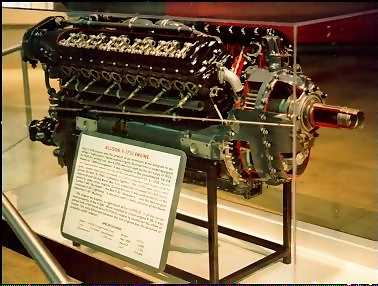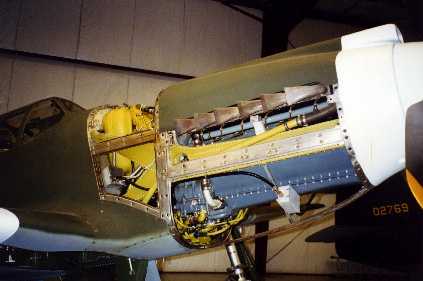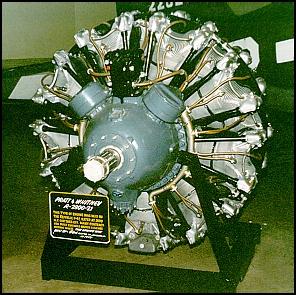
General Electric F404-GE-400 & 402Jet Engine

Specifications: F404-GE-400
Thrust (lb): 16,000
Airflow (lb/sec): 142
Weight (lb): 2,185
Maximum Diameter (in): 35
Pressure Ratio: 25 to 1
Specifications: F404-GE-402
Thrust (lb) 17,700
Airflow (lb/sec) 146
Weight (lb) 2,282
Maximum Diameter (in) 35
Pressure Ratio 26 to 1
Milestones: F404
F404 Entered U.S. Navy Service 1981
First Operational U.S. marine Squadron 1983
First Operational Carrier Squadron 1985
First Delivery of F404-402 EPE 1991
3,000th F404 Engine Delivery 1994
F404 Attained Five Million Flight Hours 1995
Courtesy General Electric
General Electric F110-GE-129 Jet Engine

Specifications: F110-GE-129
Thrust Class (lb/kN) 29,000/129*
Length (in/m) 181.9/4.6
Max. Diameter (in/m) 46.5/1.2
Air Flow Class (lb/s; kg/s) 270; 122.4*
Bypass Ratio 0.76
Engine Controls FADEC (normal) mode, plus two hybrid
modes with pure hydromechanical backup mode
* The F110-GE-129 engine, as delivered, has consistently
demonstrated 31,000 lb/138kN thrust at sea level static
uninstalled and 270 lb/s flow.
Courtesy General Electric
General electric F414-GE-400 Jet engine

Specifications: F414-GE-400
Thrust Class (lb) 22,000
Weight (lb) 2,445
Maximum Diameter (in.) 35
Pressure Ratio 30 to 1
Thrust-to-Weight 9 to 1
Overview
Specifications
Milestones: F414-GE-400
Engineering and Manufacturing Development (EMD) began June 1992
First Engine To Test May 1993
PFQ (Flight Qualification) September 1995
First F414 Flight November 1995
LPDQ (Low Rate Production Qualification September
1996
Production Begins June 1998
Courtesy General Electric
Allison V-1710 Aircraft Engine

The V-1710 engine was the first product of an extensive Army program to develop
a high-power, liquid-cooled engine. Derived from a model designed in 1930 for airship use,
the V-1710 was first used by the Air Corps in 1932. Rated at 1,000 horsepower, it was
installed in the Consolidated XA-11A, an experimental attack version of the Consolidated
P-25. By 1938, the engine's output had been increased to 1,150 horsepower and was used to
power the Bell X/YFM-1 multiplace fighters. The V-1710 was continually improved and during
World War II its output was increased to 1,475 horsepower in some series engines. During
the war it was used primarily in the Curtiss P-40 "Warhawk",
the Bell P-39 "Airacobra", and the twin-engine Lockheed P-38 "Lightning". It was also used in early versions
of the North American P-51 "Mustang".
The engine on display, a right-hand drive V-1710-51, is of the series used primarily in
the P-38G. When installed in a twin-engine P-38, it was paired with
a left-hand drive V-1710-55 engine to counteract the effect of torque. The only difference
between the two engines was the direction of propeller-shaft rotation.
SPECIFICATIONS
Model: V-1710-51 (right-hand drive)
Type: 12 cylinder, supercharged
Displacement: 1,710 cu.in.
Weight: 1,345 lbs.
Maximum RPM: 3,000
Maximum Horsepower: 1,325
Cost: $19,000 (engine only)

Allison engine installation on P-51A
Courtesy U. S. Air Force Museum
Packard V-1650 "Merlin" Engine
 The V-1650 liquid-cooled engine was the U.S. version of the famous
British Rolls-Royce "Merlin" engine which powered the "Spitfire" and
"Hurricane" fighters during the Battle of Britain in 1940. In Sept. 1940, the
Packard Co. agreed to build the Merlin engine for both the American and the British
Governments, and adapted it for American mass-production methods. The first two
Packard-built Merlins to be completed were demonstrated on test stands at a special
ceremony at the Packard plant in Detroit on August 2, 1941. Full production began in 1942
and by the end of World War II, more than 16,000 Merlins had been produced in the U.S.A.
The Army Air Forces used the engine almost exclusively in the famed P-51
"Mustang", for it provided greatly improved high-altitude performance over
the Allison V-1710 engine used in earlier
series of the airplane. The V-1650 Merlin also replaced the V-1710 in the "F"
series of the P-40. The British also used Packard-built Merlins during the last three
years of the war in their "Spitfire", "Mosquito", and
"Lancaster" airplanes.
The V-1650 liquid-cooled engine was the U.S. version of the famous
British Rolls-Royce "Merlin" engine which powered the "Spitfire" and
"Hurricane" fighters during the Battle of Britain in 1940. In Sept. 1940, the
Packard Co. agreed to build the Merlin engine for both the American and the British
Governments, and adapted it for American mass-production methods. The first two
Packard-built Merlins to be completed were demonstrated on test stands at a special
ceremony at the Packard plant in Detroit on August 2, 1941. Full production began in 1942
and by the end of World War II, more than 16,000 Merlins had been produced in the U.S.A.
The Army Air Forces used the engine almost exclusively in the famed P-51
"Mustang", for it provided greatly improved high-altitude performance over
the Allison V-1710 engine used in earlier
series of the airplane. The V-1650 Merlin also replaced the V-1710 in the "F"
series of the P-40. The British also used Packard-built Merlins during the last three
years of the war in their "Spitfire", "Mosquito", and
"Lancaster" airplanes.
SPECIFICATIONS
Model: V-1650-7
Type: 12-cylinder with two-stage mechanically-driven supercharger
Displacement: 1,649 cu.in.
Weight: 1,690 lbs.
Max. RPM: 3,000
Max. HP: 1,695
Cost: $25,000
Courtesy U. S. Air Force Museum
Pratt and Whitney R-2800-21 Engine

Pratt and Whitney's R-2800 cu in. (45.9 L) was America's first 18
cylinder radial, the Double Wasp. Much smaller than the world's only other modern
eighteen, the Gnome-Rhone 18L of 3,442 cu in. (56.4 L), it was nevertheless more powerful,
and heat dissipation was correspondingly more of a problem. This meant that, for the
R-2800, the cast or forged cooling fins that had served so well in the past had to be
discarded. The cooling fins needed were so thin and fine-pitched that they had to be
machined from the solid metal of the head forging. All the fins were cut together. A gang
of milling saws was automatically guided as it fed across the head so that the bottom of
the grooves rose and fell to make the roots of the fins follow the contour of the head.
The results were worth the trouble as it was a case of designing an engine component that
could only be made by a new method and then keeping everything crossed until the new
method proved to be practical. In addition to the new head design, the Double Wasp had
probably the most scientific baffling yet to direct the flow of cooling air, more so even
than the
excellent arrangements on the Ranger inline air-cooled engines.
2000 hp was obtained from the R-2800 with 1 hp/1.4 cu in. (43.6 hp/L) of displacement. In
1939, when the R-2800 was introduced, no other aircooled engine came close to this figure,
and even liquid-cooled ones barely matched it. The designing of conventional air-cooled
radial engines had become so scientific and systematic by 1939 that the Double Wasp was
introduced at a power rating that was not amenable to anything like the developmental
power increases that had been common with earlier engines. It went to 2,100 hp in 1941 and
to 2,400 late in the war, but that was all for production models. Experimental models, as
always, were coaxed into giving more power, one fan-cooled subtype producing 2,800 hp, but
in general the R-2800 was a rather fully developed powerplant right from the beginning.
It was exclusively a powerplant for fighters and medium bombers during the war, being used
in the P-47 , the F6F
Hellcat, and the F4U Corsair , and also in the
B-26 and A-26 twin engine mediums. Post-war its reliability commended its use for
long-range patrol planes and for the DC-6, Constellation, Martin 404, and Convair
transports. This last application is noteworthy, since these were twin-engine craft of
size, passenger capacity, and high wing loading comparable with the DC-4 and the first
Constellations.
Two engines were all right for transports with the DC-3's moderate wing loading, and the
high wing loading of the DC-4 was safe enough when there were four engines, but all that
weight with only two engines seemed like tempting fate. However, the led from fatigue
after a while.) The Convairs were just as good in their way as the four-engine transports.
A well engineered installation and good controls were probably what made the difference;
had the Convair encountered as many engine failures as did Curtiss-Wright's deplorable
C-46 Commando, it would have been a sad story.
When the USA went to war in December 1941 there were very quickly some major changes in
philosophy. Such
long-established engines as the Cyclone and Twin Wasp were re-rated on fuel of much higher
anti-knock value to give considerably more power. Perhaps the most outstanding example was
the great R-2800 Double Wasp, which went into production in 1940 for the B-26 Marauder at
1,850 hp and by 1944 was in service in late model P-47
Thunderbolts (and other aircraft) at a rating of 2,800 (experimental) hp on 115-grade
fuel with water injection. Of course, all engines naturally grow in power with
development, but a major war demands the utmost performance from engines fitted to
aircraft whose life in front-line service was unlikely to exceed 50 hours' flying, over a
period of only a month or two.
In peace time the call was for reliability over a period of perhaps a dozen years. And of
course a pilot in combat has no time to fiddle endlessly with a fistful of engine controls
in order to maintain the optimum engine operating conditions, and bearing in mind the rate
at which aircrew had to be produced in wartime he probably did not have the knowledge of
how to do this either.
Specifications:
Pratt and Whitney R-2800 Double Wasp - USA
Date: ----------------- 1939
Cylinders: ------------ 18
Configuration: -------- Radial, Air cooled
Horsepower: ---------- 2000
R.P.M.: --------------- 2400
Bore and Stroke: ----- 5.8 in. (146 mm) x 6 in. (152 mm)
Displacement:--------- 2,800 cu. in. (45.9 liters)
Weight: --------------- 2,350 lbs. (1,068 kg)
Courtesy U. S. Air Force Musemu
General Electric F110-GE-400 Jet engine

Specifications: F110-GE-400
Thrust Class (lb) 27,000
Length (in) 232
Max. Diameter (in) 46.5
Air Flow Class (lb/sec) 270
Bypass Ratio 0.87
Engine Controls Electronic primary control -
Hydromechanical backup
Courtesy General Electric